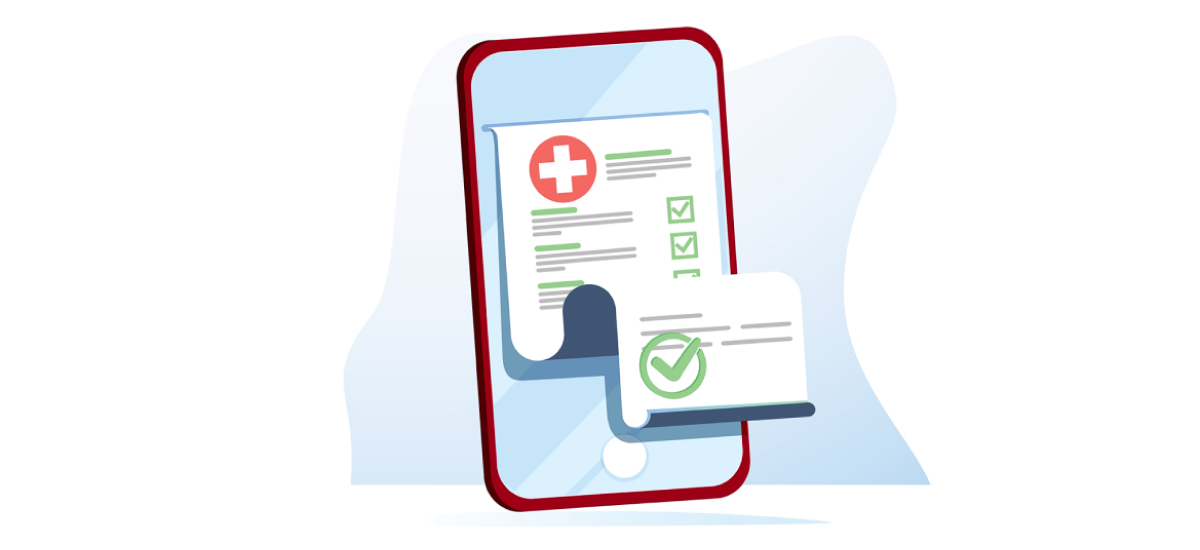You know your anxious thoughts and feelings are preventing you from living a full life and you have heard that something called Cognitive Behavioural Therapy (CBT) could help with dealing with anxiety. But how does CBT for anxiety actually work? To find out, we spoke to Jeni Fisk, a psychologist at the University of Oxford in the UK.
What is CBT?
CBT is a practical talking therapy used to treat anxiety, depression and other disorders. It aims to help people learn skills they can use throughout their lives to help them retake control. “CBT is based on the theory that thoughts, emotions, physical symptoms and behaviours are connected,” says Fisk. “How we think affects how we feel. How we feel affects how we behave. And how we behave affects how we feel.”
CBT behavioral techniques aims to disrupt that cycle by teaching you strategies that can help you change the way you think about things (what psychologists call cognitions) and your resulting behaviours. The idea is that, by making positive changes to your cognitions and behaviours, the way you feel could also improve.
What is anxiety?
“Anxiety is what we feel when we are worried, tense or afraid, particularly about things that are about to happen or that we think could happen,” says Fisk. “It’s a completely natural response to genuine threats or problems. But, for some people, their interpretations of and responses to events may be out of proportion to reality.”
Anxiety is a little like a smoke alarm. If your smoke alarm is working properly, it will only go off when there’s enough smoke to indicate a potential fire. That’s useful. But if your smoke alarm started going off every time you fried an egg or took a shower, you would have a problem. And if it was set to automatically call the fire brigade, your broken smoke alarm could completely derail your life until you got it fixed.
You might have a problem with anxiety if it:
is very strong and/or long-lasting
is out of proportion to reality
causes you to avoid the things that trigger it
feels very distressing and/or hard to control
regularly causes physical symptoms, such as a rapid heart rate, shortness of breath, sweating or panic attacks
gets in the way of living your life and/or doing things you enjoy
Generalised Anxiety Disorder In Adults
Some people have a generalised anxiety disorder (GAD) where many everyday things can trigger anxiety. For instance, most of us would not bat an eyelid at the post being delivered. But someone with a generalised anxiety disorder may react quite differently. “It could trigger the thought: ‘This could contain bad news. I can not cope with that,’” says Fisk. “In turn, this may trigger anxiety-related emotions—such as panic—and physical symptoms. As a result, they can behave in ways that would seem irrational to most people but which are, in fact, perfectly rational given these cognitions, emotions and physical symptoms. In this case, a person who is fearful of opening the mail may avoid it entirely.”
Other people have issues with anxiety in response to specific things. Public speaking is a classic example. “Although I worry about public speaking, I can still do it,” says Fisk. “But someone who is excessively anxious about it may either avoid the situation completely or feel so overwhelmed that they are unable to do it effectively.”
How does CBT for anxiety work?
There are lots of strategies used in CBT that aim to change thoughts and behaviours and ultimately, might help with reducing anxiety. For example:
Psychoeducation Learning about the CBT model, anxiety, and how our thoughts, feelings, physical symptoms and behaviours are interconnected.
Cognitive restructuring Learning how to respond to triggers with thoughts that are both more positive and more realistic. “Identifying and changing negative or irrational thoughts has the potential to change your feelings and behaviours,” says Fisk.
Exposure This involves repeatedly exposing yourself to something that lies only just outside of your comfort zone until it expands to include that thing. As Fisk explains, this technique is often used to reduce extreme fears and phobias. “If you are afraid of spiders, you might start by just looking at pictures of spiders,” says Fisk. “Once you are comfortable with that, you might touch a plastic spider. Then you might be able to sit in a room with a spider in a tank. With enough gradual exposure, it’s entirely possible for even the most arachnophobic person to eventually feel comfortable with spiders crawling over them!”
Relaxation techniques To help you deal with the physical sensations and symptoms of anxiety.
How can I get CBT?
If you would like to explore CBT for anxiety by yourself, there are plenty of books and apps designed to help you learn and start using some of the techniques. For instance, you could try What’s Up? – A mental health app on iOS and Android, or check out Helen Kennerley’s book Overcoming Anxiety.
Many people find that the best way of reducing anxiety with CBT is to visit a cognitive behavioural therapist. “A good CBT therapist does not tell you what to do,” says Fisk. “Their job is to help you discover cognitions or behaviours that might be feeding your anxious feelings, and to support you in learning techniques that may help with reducing anxiety.”
When looking for a therapist, you need two things. First, they should be qualified. You can check this by ensuring they are accredited by the appropriate psychological organisation for your country. In the UK, for instance, that’s the British Association for Behavioural and Cognitive Psychotherapies. Alternatively, your doctor should be able to refer you to a recognised therapist.
When you visit your doctor, they will point you in the direction of recognised CBT therapists. They will also be able to listen and suggest other options too. Once you make that initial first step, you will find out more information about all the support available and you will be able to decide for yourself.
Finally, Fisk says it is important to find a therapist that you feel comfortable with. “You should feel like they are listening, that they understand you and that you can work with them in a collaborative relationship.” So, if you start seeing a therapist and you do not feel like you have a good “vibe” with them, do not be afraid to switch if you can. Always go back to your doctor for further recommendations if you feel they are not the therapist for you – the right therapist is out there.
























